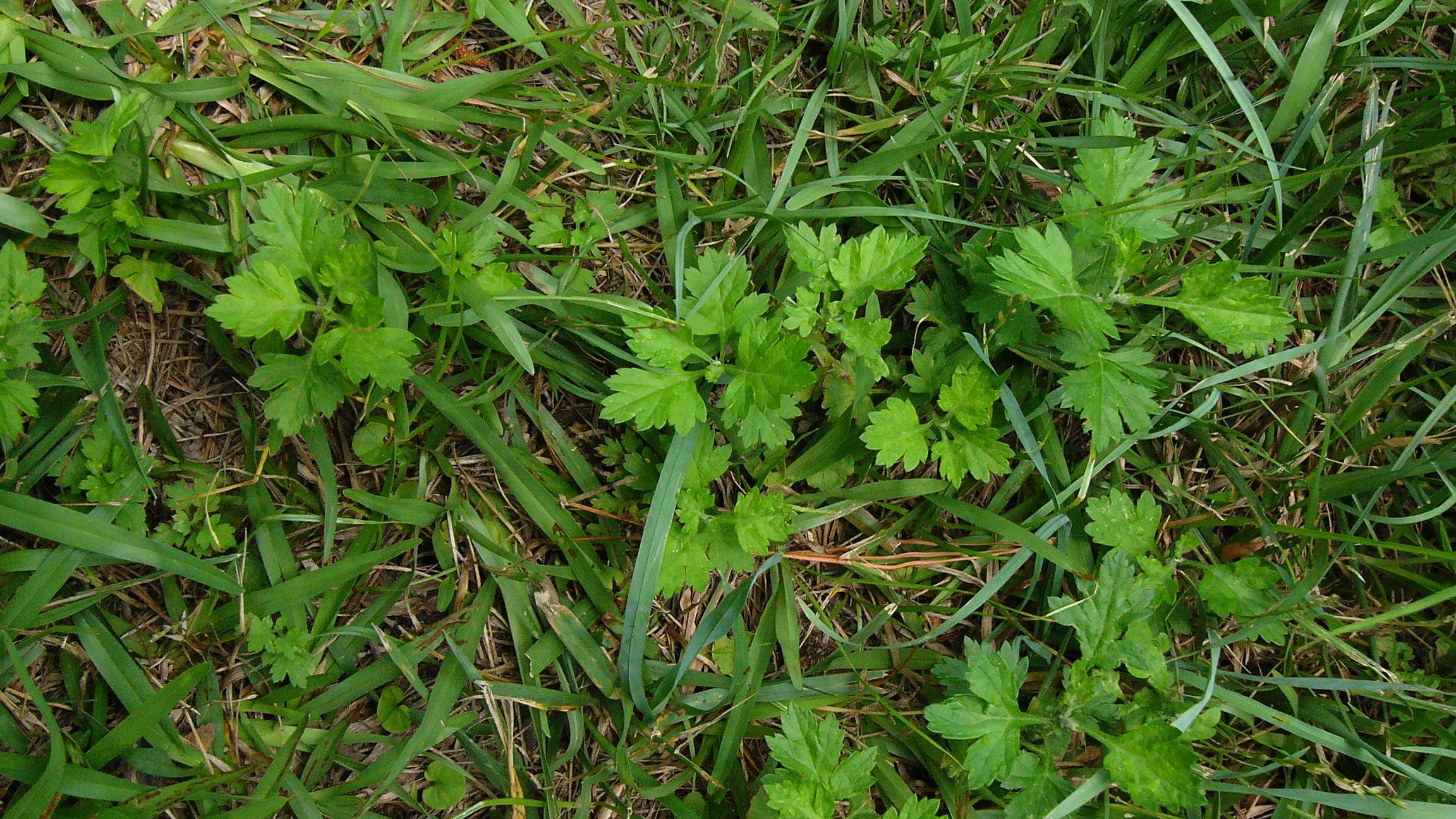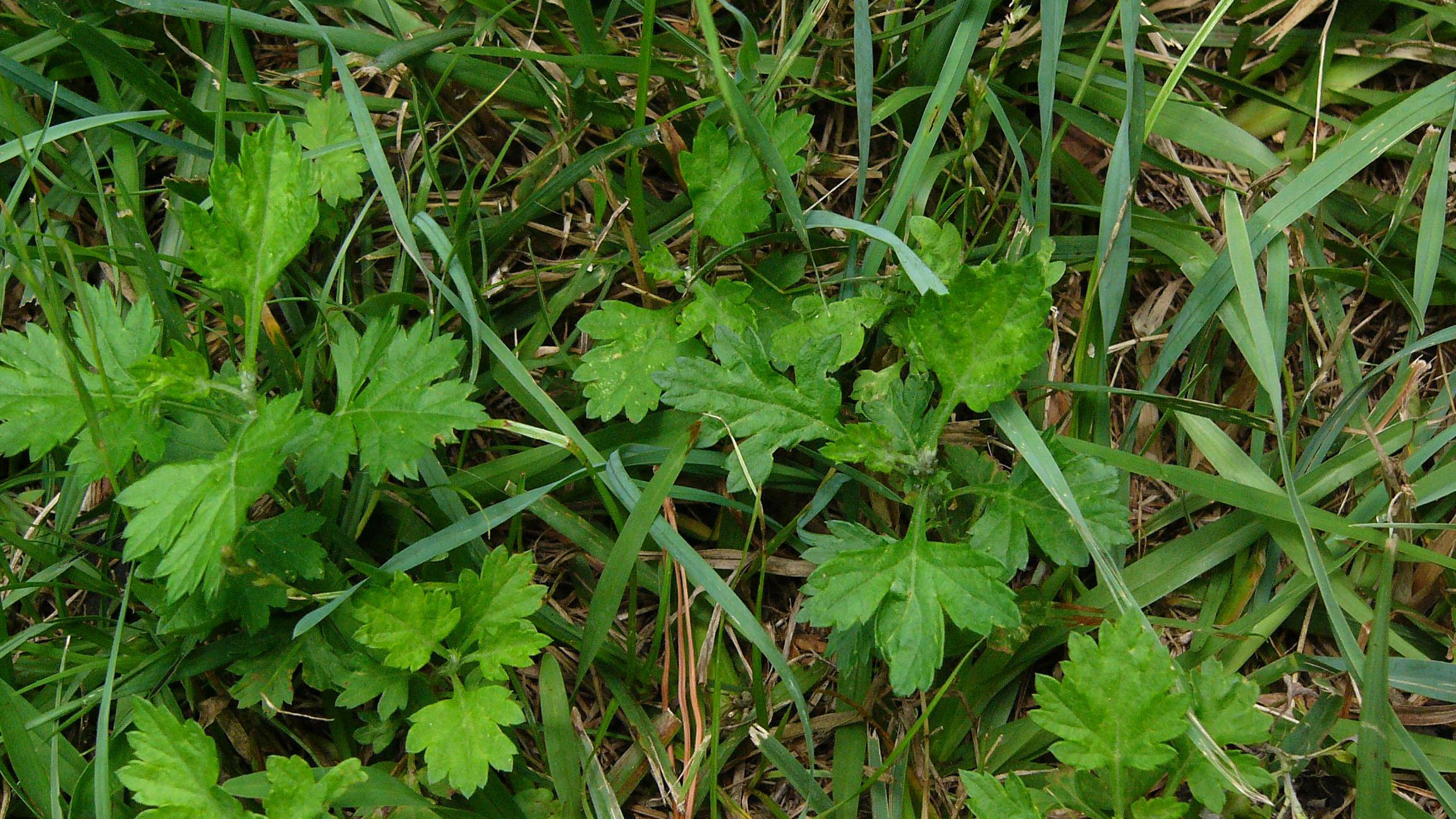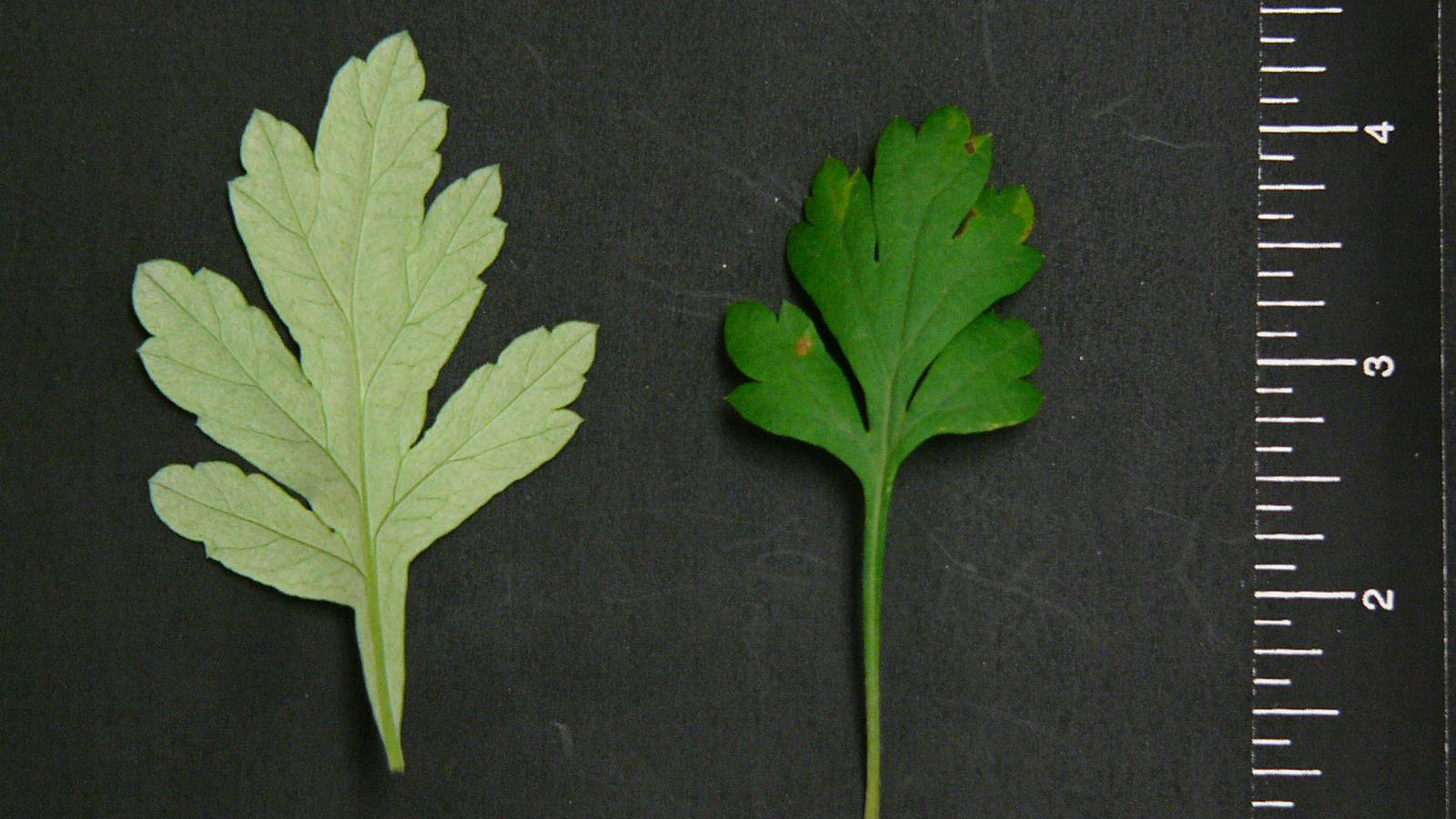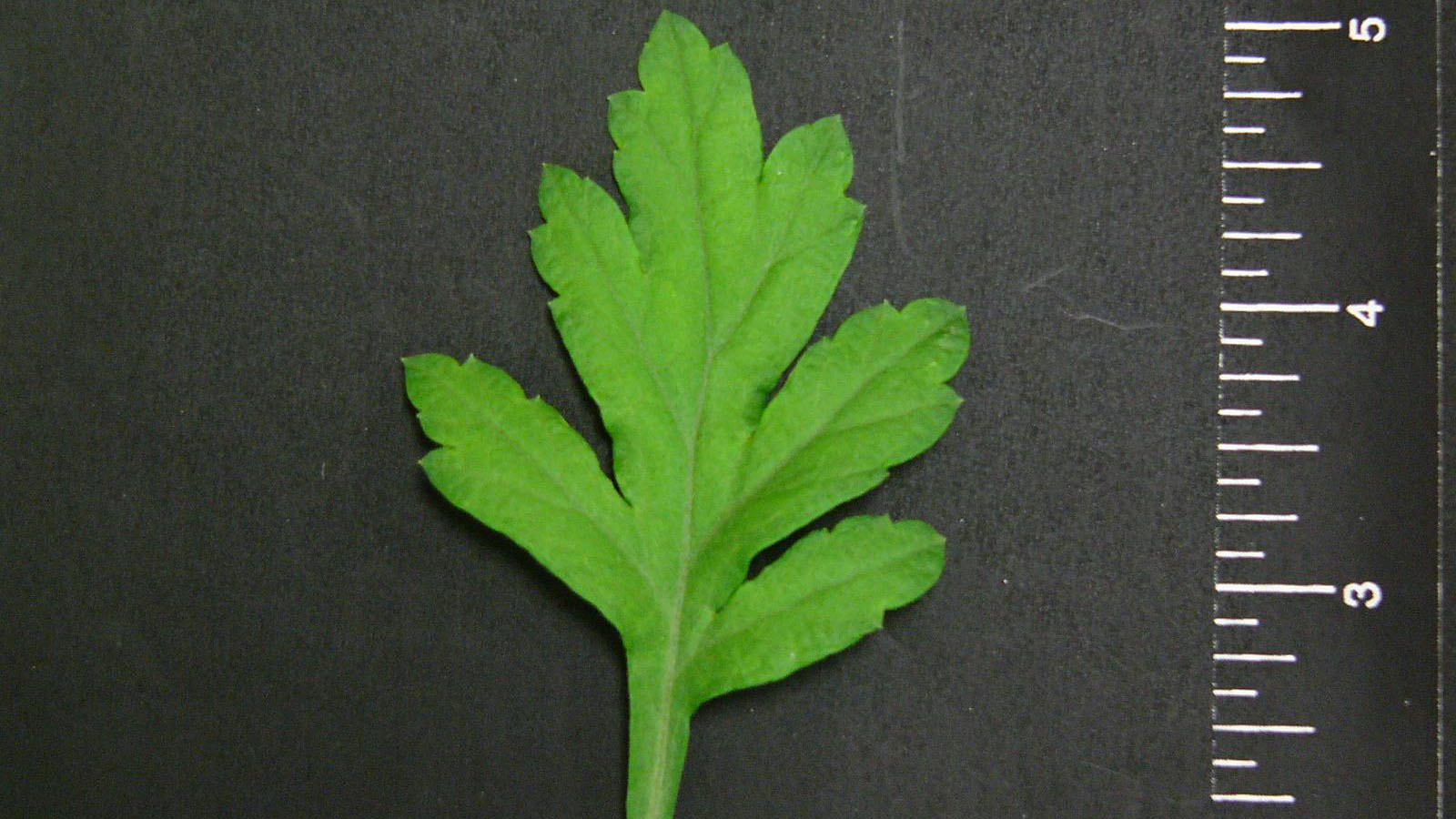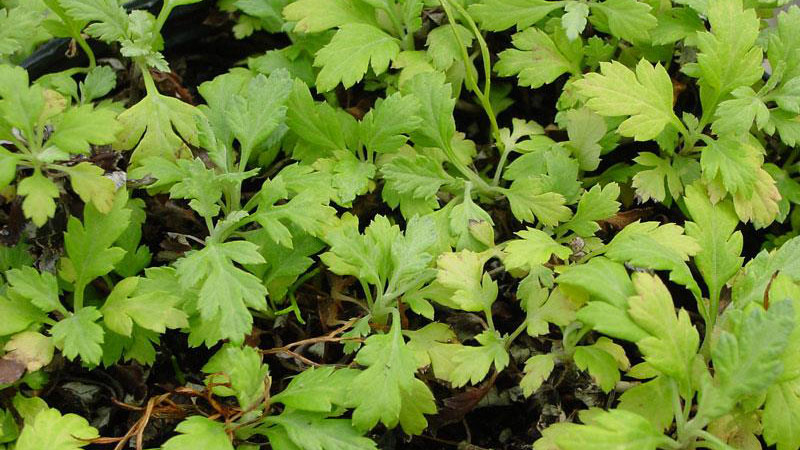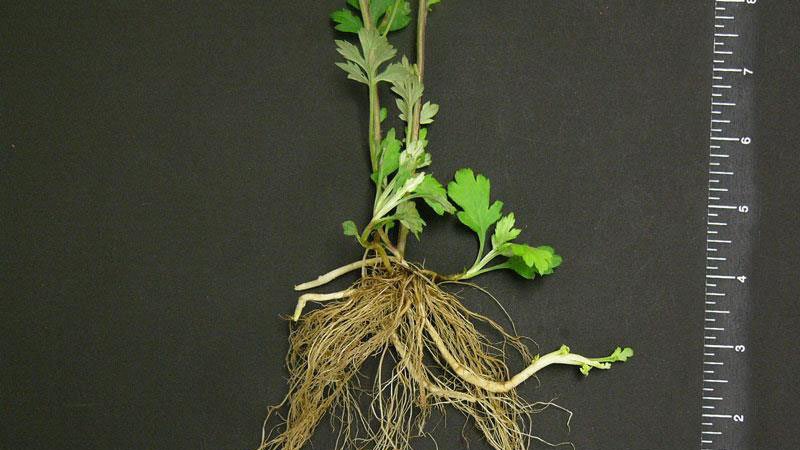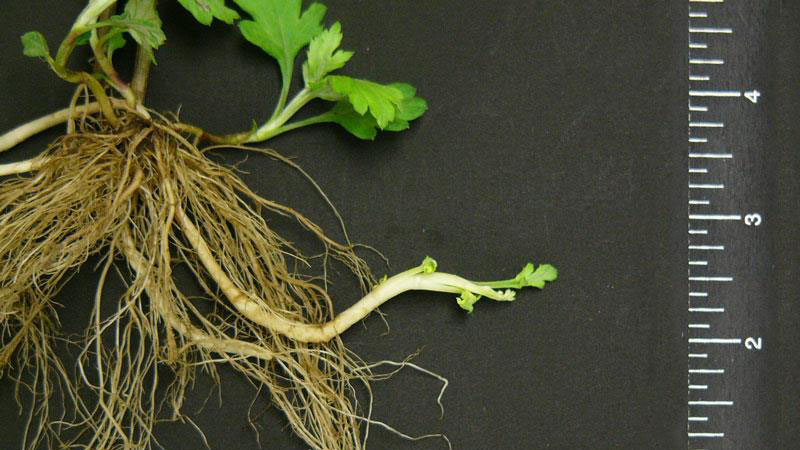Description
Mugwort (Artemisia vulgaris) is a perennial weed with very distinctive alternate and dissected leaves. The upper leaf surface is bright green and smooth, while the lower leaf surface is light green in color and very hairy. The leaves resemble common chrysanthemums, and also emit an odor when crushed. Mugwort is commonly found in waste areas, flower beds and lawns. Its strong and persistent rhizomes mean that cultural and chemical control can be difficult.
Cultural Control
Perennial broadleaf turf weeds are capable of living more than two years. They thrive in weak, thin turf; golf fairways and roughs; home lawns; playfields; and industrial grounds. Proper turf maintenance is the key to control of this weed. First, select adapted turfgrass cultivars for your area and then properly fertilize, mow, and water to encourage dense growth.
Species Data
- GROWTH SEASON / LIFE CYCLE
- perennial weed
- GROWTH HABIT
- LEAFLET NUMBER
- one
- LEAF MARGIN
- deeply lobed, upper leaf surface dark green, underside of leaf white to gray
- LEAF HAIRS
- dense hairs on upper surface, smooth to slightly hairy bottom surface
- LEAF / LEAFLET SHAPE
- LEAF WIDTH
- 1 inch to greater than 2 inches
- LEAF VENATION
- pinnate
- LEAF ARRANGEMENT
- alternate
Figure 6
- alternate
- ROOT TYPE
- FLOWER COLOR
- inconspicuous
Publication date: Nov. 16, 2017
Recommendations for the use of agricultural chemicals are included in this publication as a convenience to the reader. The use of brand names and any mention or listing of commercial products or services in this publication does not imply endorsement by NC State University or N.C. A&T State University nor discrimination against similar products or services not mentioned. Individuals who use agricultural chemicals are responsible for ensuring that the intended use complies with current regulations and conforms to the product label. Be sure to obtain current information about usage regulations and examine a current product label before applying any chemical. For assistance, contact your local N.C. Cooperative Extension county center.
N.C. Cooperative Extension prohibits discrimination and harassment regardless of age, color, disability, family and marital status, gender identity, national origin, political beliefs, race, religion, sex (including pregnancy), sexual orientation and veteran status.


